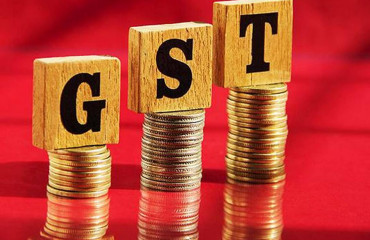
Mark Carney’s Liberal Party victory in Canada’s federal elections may well be remembered as one of the biggest political turnarounds in electoral history. A year ago, Canada’s political landscape seemed to favour the Conservative Party, led by Pierre Poilievre. The seat tally in Canada’s House of Commons gives the Liberals a fourth consecutive term in power, as they’re within a whisker of the 172-seat majority mark, with the Conservatives lagging by two-dozen seats.
Mark Carney's Liberal Party victory in Canada's federal elections may well be remembered as one of the biggest political turnarounds in electoral history. A year ago, Canada's political landscape seemed to favour the Conservative Party, led by Pierre Poilievre. The seat tally in Canada's House of Commons gives the Liberals a fourth consecutive term in power, as they're within a whisker of the 172-seat majority mark, with the Conservatives lagging by two-dozen seats.
Carney's steady, policy-driven campaign reassured voters at a time of turmoil brought about by US President Donald Trump's hostile rhetoric, trade threats and talk of annexation, which fuelled fears over Canadian sovereignty. His message resonated strongly even in non-Liberal provincial holds like Quebec, where Liberals secured almost half the seats, outdoing the Bloc Québécois.
Carney now faces the tough task of leading a rattled country facing high inflation, housing pressures and global instability.
Also Read: Mint Quick Edit | Carney's poll vault: India's impressed too
Trump effect: Trump's attitude towards Canada played a critical role in shaping Carney's campaign. US tariff policy and threats of economic disengagement deeply impacted Canadian households, especially in border provinces. Canada-US relations were thus a pressing issue in these polls. Economic anxieties were worsened by rising prices and stagnant wages, as many Canadians struggled to make ends meet.
Canada's inflation rate peaked at 8.1% in June 2022, the highest since 1983. Though it moderated to 2.3% over the past year, it still looms over Canadian households. Rental prices have climbed nationwide, squeezing budgets already strained by rising grocery bills amid stagnant wages. The Bank of Canada attributes inflation to supply-chain disruptions, post-covid recovery struggles, and shocks like the war in Ukraine.
Opinion polls showed that many Canadians felt the incumbent Liberal government's response under previous prime minister Justin Trudeau was slow and inadequate. Carney, a former central banker, promised change. This stirred hope.
On inflation, both parties offered divergent responses. The Liberals introduced policies like expanding means-tested benefits and revising tax rules for capital gains. Conservatives, on the other hand, promised sweeping tax reforms, including a cut in the basic federal income tax rate from 15% to 12.75%. Yet, economists were sceptical that either platform could fundamentally alter Canada's fiscal trajectory in the short-term.
Also Read: Carney is yet to make his mark; Manmohan Singh made his long ago
Housing was another dominant issue this election. With the average Canadian home now priced at around $678,000, the Liberal plan proposed GST exemption for newly built homes under $1 million. The Conservative platform raised that ceiling to $1.3 million while pledging expeditious clearances and greater federal land availability for housing. Still, neither side tackled the core structural problem: urban demand far outstripping housing supply, especially in Toronto and Vancouver.
Public healthcare too, a pillar of Canada's socio-political identity, returned to the national conversation. After pandemic-related disruptions and funding shortfalls, the average wait times for surgeries and specialist consultations reached 30 weeks. The Liberals promised renewed investment in public healthcare. The Conservatives supported expanding private options through tax credits, sparking a debate over whether such a move would erode the public system.
Leadership style contrast: Carney's technocratic tone and extensive background in economic governance contrasted sharply with Poilievre's more combative and populist rhetoric. Carney came across as serious, empathetic and well-prepared, while Poilievre focused on emotional appeals and an anti-elite narrative.
Role of economic anxiety: While the above factors were all relevant, what really redrew Canada's political map was a broad fear among Canadians of Trump's actions, economic decline and national instability. This election was unique as it was marked by a search for assurance on the country's future. This factor favoured Carney.
Also Read: Trump tariffs: Central banks can't afford to wait and watch forever
Foreign policy was a top-tier issue for many voters, particularly supporters of the Liberal Party, as opinion polls revealed. The party-wise divergence reflected a deeper ideological rift. For many Conservatives, Trump represented a transactional ally. For Liberals and centrists, he posed a direct threat to Canadian sovereignty, values and trade.
Canadians' perception of the US has dramatically shifted. Only 15% of citizens now consider the US an unambiguous ally, while 49% describe it as unfriendly or hostile, as per recent polls. In this context, Carney's experience on the global stage and diplomatic tone stood in stark contrast to Poilievre's inward-looking economic nationalism.
Carney's poll victory signals an electorate preference for competence over charisma, stability over disruption. Yet, he may need the support of other parties to govern, and must deliver results.
As for India, we have a window to recalibrate our relationship with Canada now that its ruling Liberal Party's new leader has a poll mandate.
Ankur Singh contributed to this article.
The author is professor and dean, O.P. Jindal Global University, visiting professor, London School of Economics, and a visiting research fellow at the University of Oxford.
